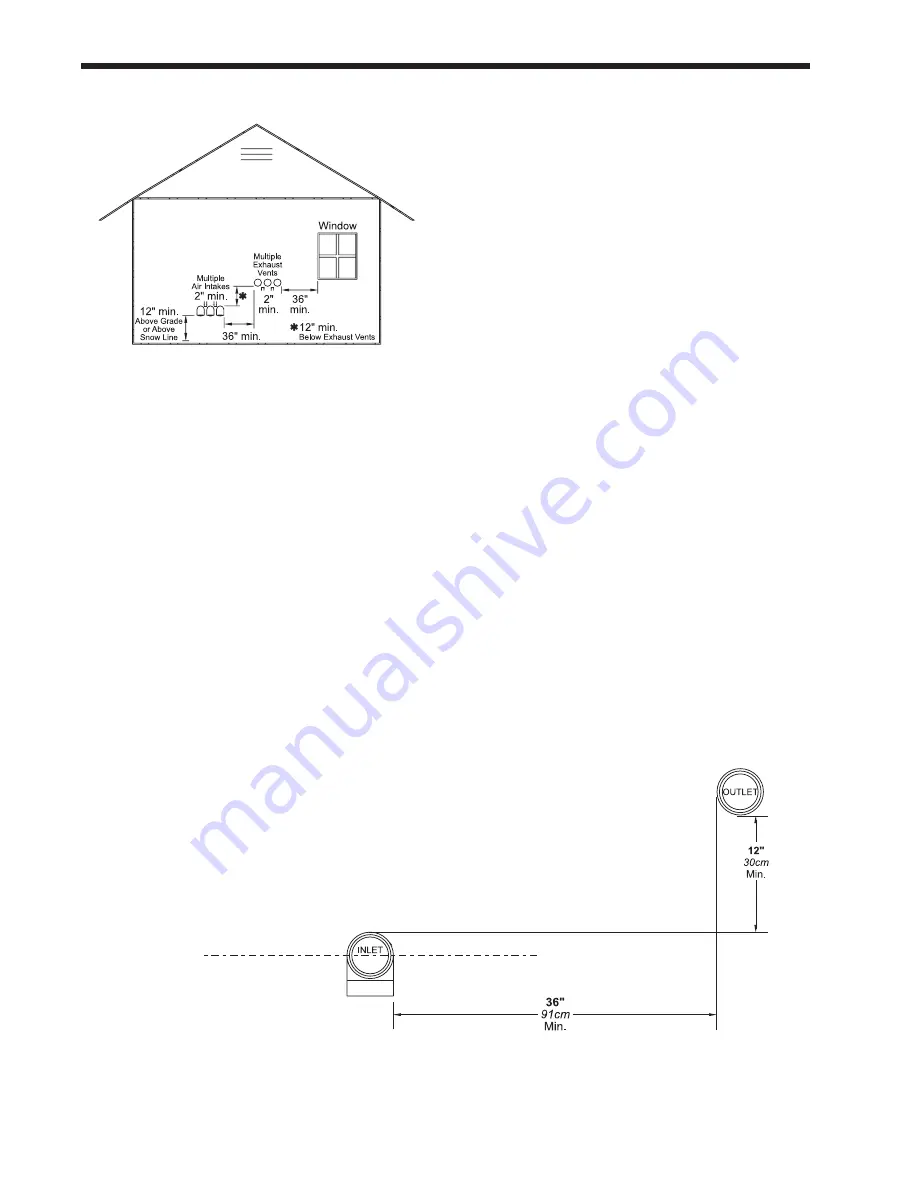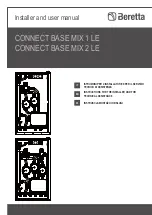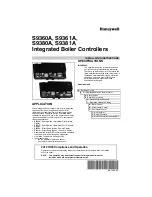
LAARS Heating Systems
Page 12
2. Vent terminals for condensing appliances or
appliances with condensing vents are
not
permitted to terminate above a public walkway,
or over an area where condensate or vapor
could create a nuisance or hazard.
3. Locate the vent terminal so that vent gases
cannot be drawn into air conditioning system
inlets.
4. Locate the vent terminal so that vent gases
cannot enter the building through doors,
windows, gravity inlets or other openings.
Whenever possible, avoid locations under
windows or near doors.
5.
Locate the vent terminal so that it cannot
be blocked by snow. The installer may
determine that a vent terminal must be
higher than the minimum shown in codes,
depending upon local conditions.
6. Locate the terminal so the vent exhaust does
not settle on building surfaces or other nearby
objects. Vent products may damage surfaces or
objects.
7. If the boiler or water heater uses ducted
combustion air from an intake terminal located
on the same wall, see Figures 9 and 10 for
proper spacing and orientation.
If the vent termination is located in an area exposed
to high winds, an optional PVC tee (the same
diameter as the vent pipe) may be used. The tee’d
vent termination offers greater protection from wind
related operating issues.
3.3.2 Side Wall Combustion air terminal
The LAARS side wall combustion air terminal
must be used when the heater takes air from a side
wall. (See Table 3.) Contact Laars for AL29-4C
termination fittings. Consider the following when
installing the terminal. (See Figures 9 and 10).
1. Do not locate the air inlet terminal near a
source of corrosive chemical fumes (e.g.,
cleaning fluid, chlorine compounds, etc.).
2. Locate the terminal so that it will not be subject
to damage by accident or vandalism. It must be
at least 7 feet ( 2.1 m) above a public walkway.
fig. 10 - minimum Venting Distance
IMPORTANT:
All terminals must be placed so that they remain at least
12” above the expected snow line. Local codes may have more specific
requirements, and must be consulted. Refer to the NFPA54 National Fuel
Gas Code and your local codes for all required clearances for venting.
fig. 9 - multiple Side-Wall terminals, air and Vent
Summary of Contents for NTV1000
Page 2: ......
Page 35: ...NeoTherm Boilers and Water Heaters Page 31 Fig 20 Ladder Diagram...
Page 36: ...LAARS Heating Systems Page 32 Fig 21 Wiring Diagram...
Page 37: ...NeoTherm Boilers and Water Heaters Page 33...
Page 51: ...NeoTherm Boilers and Water Heaters Page 47 Fig 52 Connection Terminals...
Page 130: ...LAARS Heating Systems Page 126 Fig 140 Machine Frame and Rear Panel 13 3 PARTS ILLUSTRATIONS...
Page 131: ...NeoTherm Boilers and Water Heaters Page 127 Fig 141 Front Panel and Covers...
Page 132: ...LAARS Heating Systems Page 128 Fig 142 Burners and Combustion Chambers...
Page 134: ...LAARS Heating Systems Page 130 Fig 145 Electronic Components...
Page 135: ...NeoTherm Boilers and Water Heaters Page 131 Fig 146 Condensate Trap Fig 147 Control Bezel...
Page 136: ...LAARS Heating Systems Page 132 Fig 148 Flow Switch...
Page 137: ...NeoTherm Boilers and Water Heaters Page 133 This page intentionally left blank...
















































